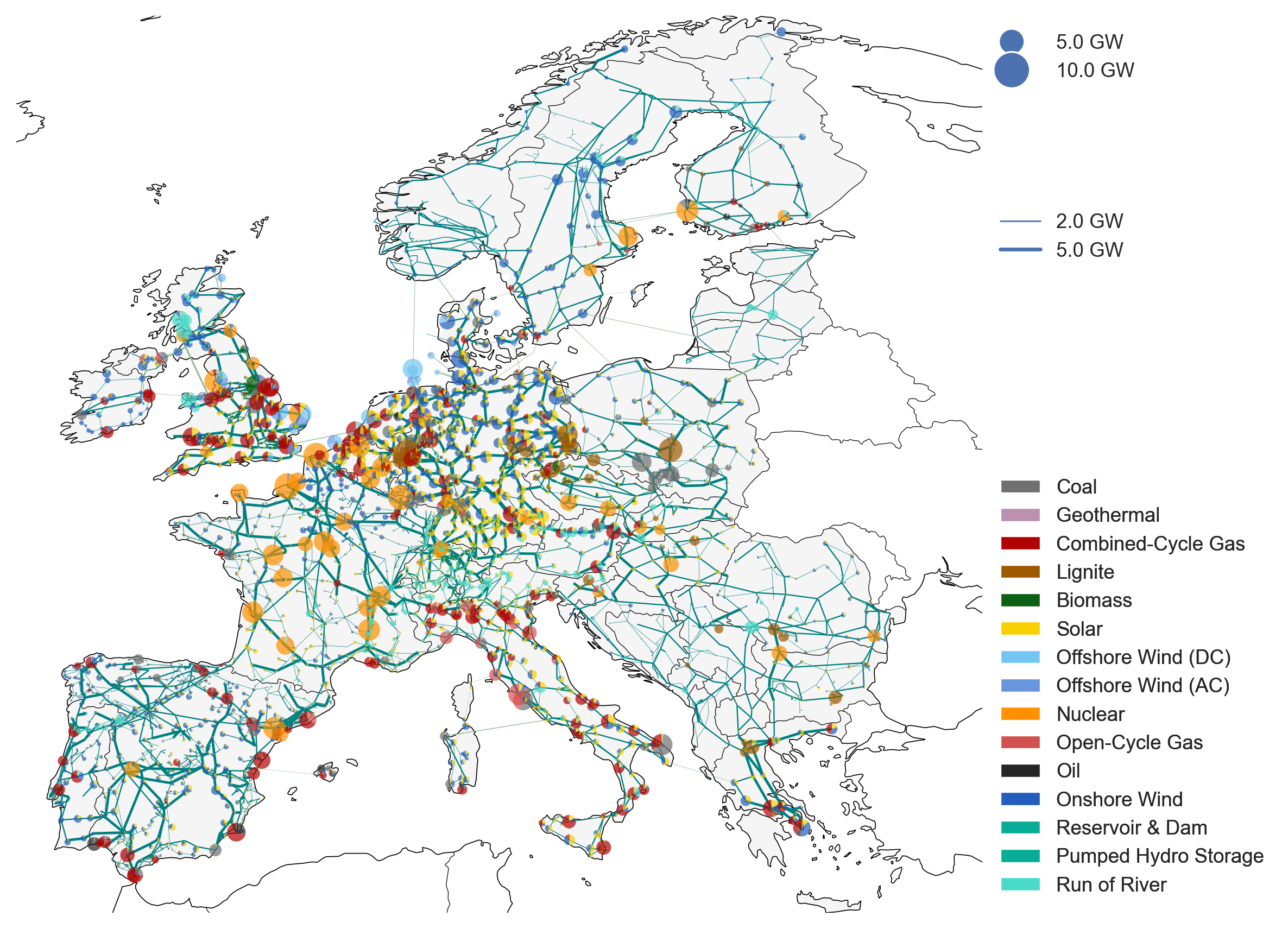The Potential Role of a Hydrogen Network in Europe
Electricity transmission expansion has suffered many delays in Europe in recent decades, despite its significance for integrating renewable electricity into the energy system. A hydrogen network which reuses the existing fossil gas network could not only help to supply demand for low-emission fuels, but could also to balance variations in wind and solar energy across the continent and thus avoid power grid expansion. We pursue this idea by varying the allowed expansion of electricity and hydrogen grids in net-zero CO2 scenarios for a sector-coupled and self-sufficient European energy system with high shares of renewables. We cover the electricity, buildings, transport, agriculture, and industry sectors across 181 regions and model every third hour of a year. With this high spatio-temporal resolution, the model can capture bottlenecks in transmission networks, the variability of demand and renewable supply, as well as regional opportunities for the retrofitting of legacy gas infrastructure and the development of geological hydrogen storage. Our results show consistent system cost reductions with a pan-continental hydrogen network that connects regions with low-cost and abundant renewable potentials to demand centres, synthetic fuel production and cavern storage sites. Developing a hydrogen network reduces system costs by up to 26 billion Euros per year (3.4%), with the highest benefits when electricity grid reinforcements cannot be realised. Between 64% and 69% of this network could be built from repurposed natural gas pipelines. However, we find that hydrogen networks can only partially substitute for power grid expansion. While the expansion of both networks together can achieve the largest cost savings of 10%, the expansion of neither is truly essential as long as higher costs can be accepted and regulatory changes are made to manage grid bottlenecks.
PDF Abstract